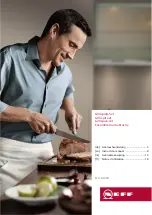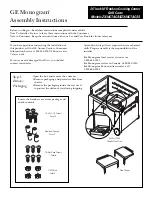
Copies of the I/B. Please reproduce them without any
changes except under special instruction from Team
International BELGIUM. The pages must be reproduced and
folded in order to obtain a booklet A5 (+/- 148.5 mm width x
210 mm height). When folding, make sure you keep the good
numbering when you turn the pages of the I/B. Don’t change
the page numbering. Keep the language integrity.
Print only
what is inside the frame.
10
USK GR 32231 - 110127
Assembly page 10/20
Fax +32 2 359 95 50
•
The lid can be used closed during or after cooking to speed up
the cooking process or keep the food warm.
•
The grease collector can be used without water in it, or with
water. With water, the cleaning is much easier.
IMPORTANT GUIDELINES FOR COOKING MEAT AND
POULTRY – TIPS FOR OPTIMAL RESULTS
•
All meat and poultry should be thoroughly defrosted before
cooking. Have foods at room temperature before placing them
on the grill.
•
We recommend the use of a meat thermometer to ensure the
food is cooked thoroughly.
•
Recommended internal temperatures:
Meat Type
Recommended Internal
Temperature
1
Poultry
180
o
F
Beef; rare
140
o
F
Beef; medium rare
145
o
F
Beef; medium
160
o
F
Beef; well done
170
o
F
Pork Chops
160
o
F
Pork Loin
160
o
F
Lamb leg (3 – 5 lb.)
160
o
F
Beef skewers
160
o
F
Seafood skewers
160
o
F
Chicken skewers
180
o
F
Sausage skewers
160
o
F
1
Internal temperature at the end of the cooking, according to USDFA Food safety and
Inspection services Guidelines
•
Cooking times will vary according to shape, thickness and
composition of food. It is recommended that food be checked
after the minimum time stated to avoid over cooking.
•
For adding flavor, do marinate or apply rubs, seasonings and
spices to foods, but this prior to putting on the grill.
Caution: Always make sure that meat and poultry are
thoroughly cooked before eating. The juices from
poultry should run clear when cooking process is
complete.






































